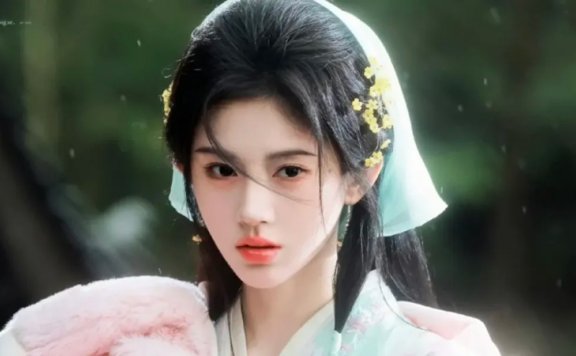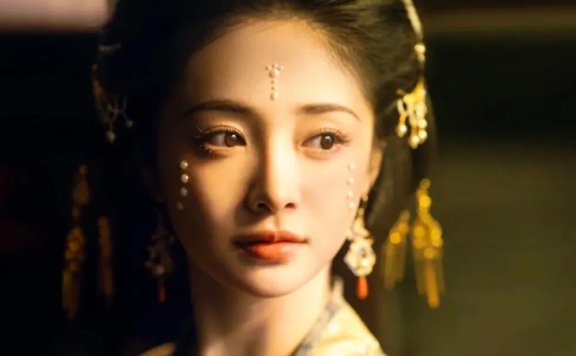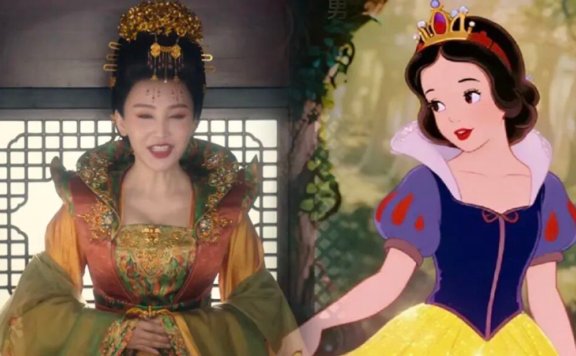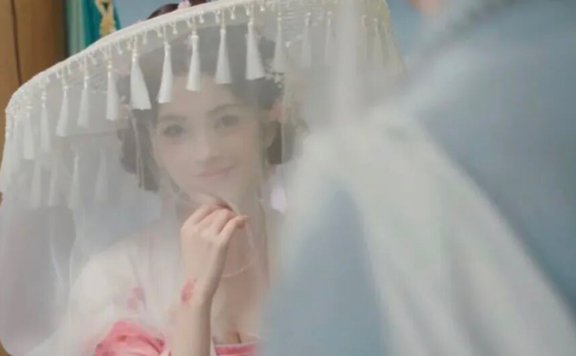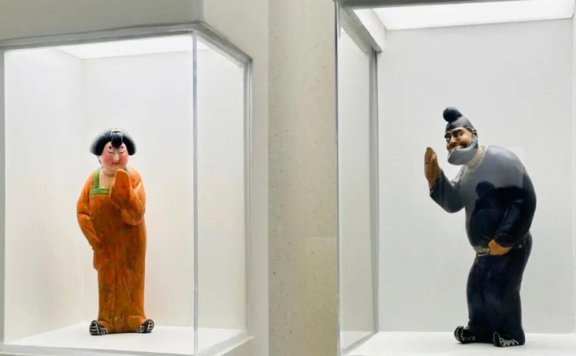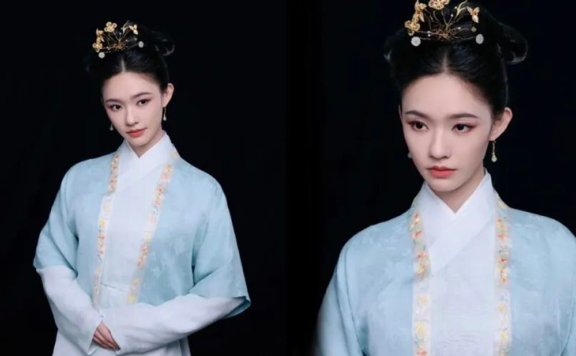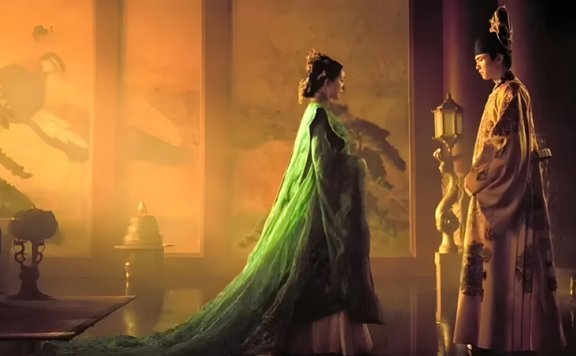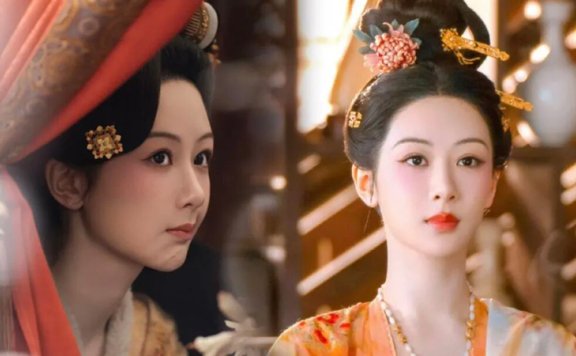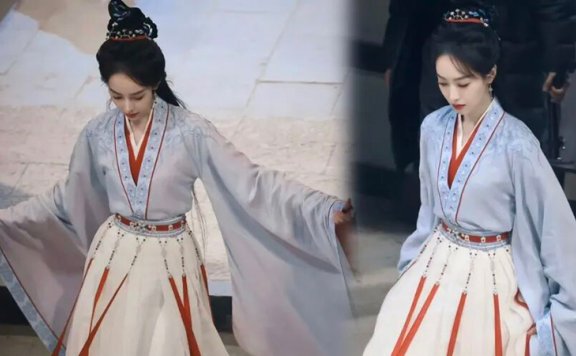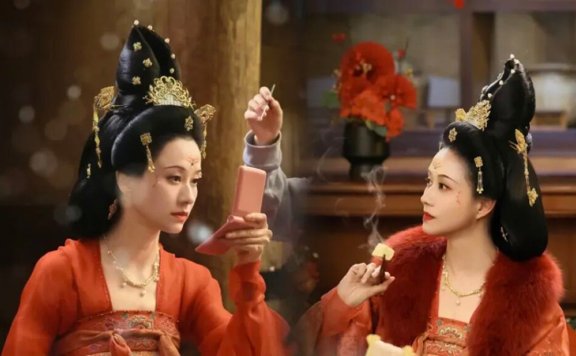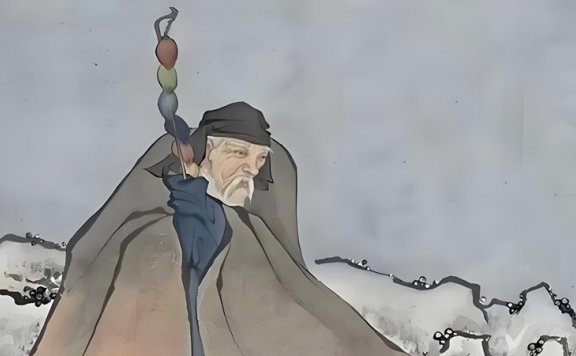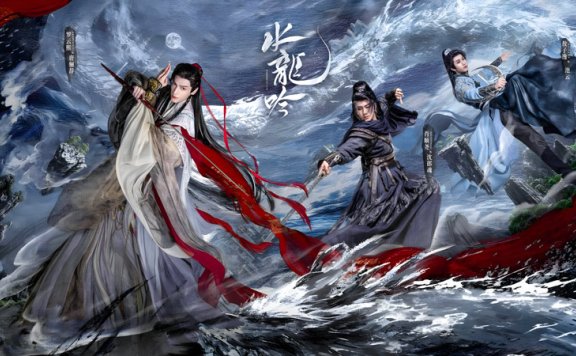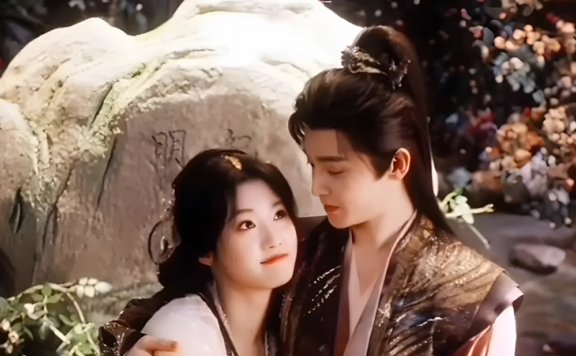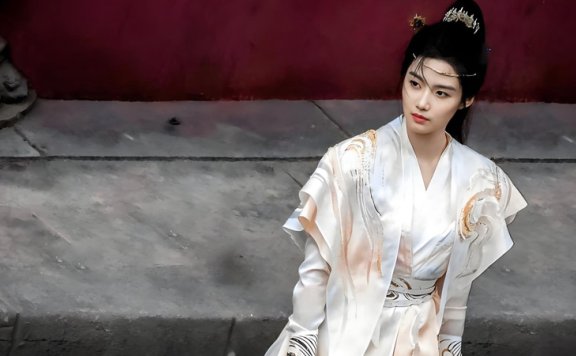Article
搜索结果:
-
What's the Story Behind Ju Jingyi's Head Scarf in Veil Of Shadows?
In the recent buzz surrounding actress Ju Jingyi (鞠婧祎) and her role in the drama Veil Of Shadows (月鳞绮纪), a simple head wrap has captured audience attention, sparking debates online. This accessory, far from a random costume choice, echoes a practical tradition from ancient China. Known as Pazi (帕子), it served as a everyday solution for managing hair, similar to modern hairbands or scarves. Its appearance in the show highlights how historical elements can blend seamlessly into contemporary storytelling, inviting viewers to look beyond the glitter of ornate hairstyles and appreciate the simplicity of daily life in past eras. This piece of cloth connects us to a time when functionality and fashion intersected in subtle ways, reminding us that some style solutions are timeless. Historical Roots Long before Veil Of Shadows brought it to screen, the head wrap had deep roots in Chinese history, dating back to periods like the Wei and Jin dynasties. Initially, both men and women used these square cloth pieces, often made from fabric scraps, to bundle their hair and maintain a neat appearance. For instance, men frequently wore a style called Zicuo (缁撮), which involved twisting black cloth into a bun-like shape, commonly seen among… -
The Story of Song Pearl Makeup’s Diversity
Why Did Pearl Makeup Styles Vary So Greatly in the Song Dynasty? From royal portraits to modern television dramas, the distinctive Zhenzhu Zhuang (珍珠妆), or pearl makeup, has become an iconic representation of Song Dynasty aesthetics. This facial adornment, featuring pearls strategically placed on the face, appears in countless historical productions and contemporary Hanfu fashion. Yet observers quickly notice puzzling differences: some wearers display sparse clusters of pearls, while others boast lavish arrangements covering entire cheekbones. What accounts for this dramatic variation in application and quantity? The answer reveals a fascinating narrative about personal expression, economic status, and cultural practices that transcended rigid social hierarchies. Social Statements Contrary to popular assumption, pearl placement and quantity never reflected official rank or marital status during the Song period. While court regulations meticulously dictated dragon and phoenix motifs on formal headdresses to indicate hierarchy, no edict governed facial pearls. The widespread belief that lower-status individuals wore fewer pearls represents a modern misinterpretation. Historical evidence confirms that pearl adornment functioned as what we might call democratic fashion—accessible in theory to anyone who could acquire pearls, though practical limitations naturally applied. The face offers limited real estate for decoration, with preferred positions including the forehead… -
The Hidden Beauty of White in Traditional Chinese Attire
When we think of white in traditional Chinese context, many immediately associate it with mourning and funerals. This common belief often leads to misunderstandings when seeing characters in historical dramas dressed in pristine white garments. However, white's role in Chinese sartorial history is far more nuanced and vibrant than mere symbolism of loss. From scholars expressing integrity to nobility showcasing elegance, white has woven itself into the fabric of daily life across dynasties. This article delves into the multifaceted journey of white clothing, challenging modern perceptions and revealing how this hue defined aesthetics beyond somber occasions. Historical White In the Ming Dynasty, white was a staple in wardrobes, especially among the elite. Women often wore Bai Ling Ao (白绫袄), a white silk jacket, during festive events like lantern festivals. These garments were not signs of grief but statements of sophistication. The natural whites used, such as Yu Du Bai (鱼肚白) or Yue Bai (月白), derived from organic dyes, offered a soft glow that complemented the surroundings. Unlike today's stark industrial whites, these tones blended seamlessly with moonlit nights and colorful lanterns, enhancing the wearer's grace without overpowering the scene. White also served practical purposes in everyday attire. It was commonly… -
Is That Snow White in Tang Dynasty China?
When viewers tuned into the historical drama Strange Tales of Tang Dynasty Ⅲ: Chang'an (唐朝诡事录之长安), a vibrant discussion erupted across social media platforms. The focus was not on the plot, but on the costume of a central character, Princess. Her gown, particularly its distinctive collar, bore a striking resemblance to the iconic outfit worn by Snow White from Western animation. This visual parallel prompted a wave of questions: Was this a deliberate borrowing from Disney? Does this design have any authentic roots in Chinese historical clothing, or is it a modern fabrication? The conversation highlights a larger, ongoing debate about how contemporary media interprets and represents historical fashion, blending fact with creative liberty. This costume controversy serves as a fascinating gateway into examining the intricate dialogue between Eastern and Western aesthetic traditions, and how ancient styles are reimagined for modern screens. Historical Inspirations To understand the princess's attire, one must look back at artifacts from the Tang Dynasty. Archaeological finds, such as ceramic dance figurines, reveal costumes with open necklines, often described as a U-shape or exposed collar. These garments, specifically used for performance, allowed for greater freedom of movement and an ethereal, flowing silhouette. The design typically involved layered… -
How Did a Simple Hat Steal the Entire Scene in Whispers of Fate?
In the fantasy drama Whispers of Fate (水龙吟), the entrance of actress Chen Yao (陈瑶) was not just seen but felt. It was not her lines or a dramatic action that first defined her character, but a piece of historical fashion: a wide-brimmed hat with a sheer veil. This single item, known as a Weimao (帷帽), immediately established an aura of mystery, elegance, and unapproachable grace. It is a prime example of how costume design can serve as powerful, non-verbal storytelling, conveying a character's status and disposition before a single word is spoken. This particular hat has become a recurring visual motif in Chinese historical dramas, captivating audiences with its poetic blend of concealment and revelation. The Weimao's Evolution The Weimao has a rich and practical history. Its predecessor was the Mili (幂篱), an earlier form of face-covering headwear. The primary distinction lay in their dimensions and materials. The Mili was often made of bamboo and featured a long veil or netting designed to cover the entire body, offering protection from wind and sand during travel. It was used by both men and women for its utilitarian function. The Weimao, typically constructed from cloth or silk, had a shorter veil… -
What Were the Must-Have Bags in Ancient Chinese Society?
In ancient China, where garments rarely featured pockets, bags became essential companions for daily life and travel. These accessories were far more than mere containers; they evolved into symbols of status, practicality, and even fashion across different dynasties. From the earliest recorded uses in the Zhou Dynasty, bags were tailored to specific needs, reflecting social hierarchies and cultural shifts. This exploration delves into how these items transformed from simple carryalls into intricate expressions of identity and style, showcasing the ingenuity of ancient craftsmanship. Early Forms During the Pre-Qin period, people already relied on bags for transporting goods, as noted in the Book of Songs. Texts describe two main types: the small Tuo (橐) and the larger Nang (囊), used for carrying food and supplies during journeys or military campaigns. These early designs emphasized functionality, with materials and sizes adapted to nomadic and agricultural lifestyles. As societies stabilized, bags began to serve broader purposes, laying the foundation for more specialized versions in subsequent eras. By the Han Dynasty, a square bag called the Shounang (绶囊) emerged, primarily holding official seals and documents. Bestowed by emperors upon officials, it became a mark of rank and authority. Historical records like the Song Shu… -
Zhang Yaqin’s Hanfu Look: Uncovering Yingluo’s Legacy
When actress Zhang Yaqin (张雅钦) appeared at a recent event wearing Tang-style Hanfu, her fans instantly recognized the look from her role as a county princess in the television drama. The online conversation quickly focused on one particular detail: the absence of a distinctive neck ornament she wore in the series. This piece of jewelry, far more than a simple accessory, is a Yingluo (璎珞), an artifact with a story woven through centuries of Chinese history, art, and spiritual belief. More Than Jewelry The term Yingluo itself originates from words meaning "jade," and it refers to a specific type of beaded necklace. Traditionally, it was not a single strand but a lavish, multi-layered piece, often described as a "many-treasures" ornament. It was crafted from a brilliant array of materials including gold, silver, jade, pearls, amber, and vibrant gemstones like coral and lapis lazuli. This composition was deeply symbolic, representing the accumulation of worldly virtues and spiritual merits. In Buddhist iconography, the Yingluo holds profound significance as a symbol of "immeasurable light." Statues of Guanyin (观音) and other revered figures are frequently adorned with intricate versions of it, serving as a form of spiritual adornment. The Vimalakirti Sutra vividly describes deities… -
Xi'an's Restroom Signs: Blending Tang Dynasty Culture with Daily Life
Have you ever hesitated in front of a restroom door, puzzled by an abstract symbol? In the ancient city of Xi'an, this everyday experience is being transformed into a subtle cultural lesson. Forget the universal stick figures; here, history itself is guiding you. A shopping mall in the city has become an unlikely hotspot, not for its stores, but for its three-dimensional restroom signs. These aren't just signs; they are miniature exhibits. They feature intricate figures—a woman in elegant Tang-style attire and a man in a traditional round-collar robe, both rendered with such detail that they seem to step out of a history book. This innovative approach is part of a broader movement where public facilities are becoming canvases for cultural storytelling, challenging the global standard for restroom signage and offering a moment of historical connection in the most mundane of places. Tang Dynasty Guides The Shanxi Archaeological Museum (陕西考古博物馆) takes this concept even further. Its restroom signs are directly inspired by artifacts unearthed from local soil. The female figure is modeled after a mural from the tomb of a Tang dynasty crown prince. She wears a graceful outfit—a narrow-sleeved gown and a long, flowing shawl. Her hairstyle is elaborate,… -
Uncovering the True History and Legacy of China's Banbi Garment
When actress Lin Yun (林允) appeared on the cultural show National Treasure, her outfit sparked immediate debate online. Viewers questioned whether her sleeveless top resembled a traditional maid's uniform, but fashion historians were quick to clarify. She wore a Banbi (半臂), a classic Chinese garment that has been misunderstood for centuries. This piece is not defined by social status but by its practical and stylish design. The confusion highlights how modern perceptions often oversimplify historical fashion. This article delves into the true nature of the Banbi, tracing its evolution from ancient courts to contemporary wardrobes, and challenges the stereotypes that have long surrounded it. Garment Basics The Banbi is essentially a half-sleeve jacket worn over other layers, similar to a modern bolero or vest. Its name derives from its sleeve length, which typically ends at the elbow. One common style is the Duijin (对襟), characterized by a front opening with symmetrical sides. This design allowed for easy movement and versatility, making it a staple in various dynasties. Unlike the assumption that it was solely for servants, historical records show it was worn by women across different social classes. The garment could be paired with long-sleeved robes or dresses, adapting to… -
The Long Skirts in China's Historical TV Series
When watching Chinese period dramas, viewers often notice characters wearing elegant gowns with long, flowing trains that sweep the ground. This style sparks curiosity about its origins. Is this a genuine element from ancient Chinese fashion, or has it been influenced by Western costume design? The answer lies in a fascinating journey through history, where clothing served as a symbol of status and cultural identity. This article delves into the evolution of these trailing garments, examining their roots in early Chinese dynasties and how they compare to similar trends in Europe. By understanding the past, we can appreciate the blend of tradition and artistic license in modern storytelling. Ancient Roots In the Warring States Period, early forms of trailing clothing appeared, as seen in silk paintings from Chu State tombs. These garments evolved into more structured robes during the Eastern Han Dynasty, where long trains became associated with formal wear for nobility. Over time, this style adapted, influencing later periods like the Tang Dynasty and Song Dynasty. Artworks such as Admonitions of the Instructress to the Court Ladies (女史箴图) depict women in layered outfits with distinct trailing elements, showcasing how these designs were idealized in court life. The persistence of… -
The History of China's Sheng Hair Ornament
Have you ever been watching a historical Chinese drama and noticed something strange on a character's head? In the series Flourished Peony (国色芳华), the actress Yang Zi, who plays the character He Weifang (何惟芳), is often seen wearing a curious square-shaped hair ornament. It looks so modern and geometric that viewers might mistake it for a pixellated mosaic. This is no costume designer's error, but a revival of an ancient tradition. This distinctive accessory, also spotted on characters of noble birth, is a real historical artifact known as a Sheng (胜). Its journey from a practical tool to a sacred symbol and finally a fashionable hairpin is a fascinating story woven through centuries of Chinese culture. Mythical Origins The story of the Sheng begins not on a dressing table, but in the realm of myth. Its earliest association is with the powerful goddess Xiwangmu (西王母), the Queen Mother of the West. Ancient texts like the Classic of Mountains and Seas (山海经·西山经) describe her appearance: she resembles a human but has a leopard's tail and tiger's teeth, with disheveled hair and a Sheng upon her head. She was a deity who governed celestial punishments and disasters. Later interpretations, however, linked her… -
Song Qian's Ethereal Dress Shines with Ancient Oxalis Knots
In the captivating world of historical dramas, certain costumes stand out and capture the audience's imagination. One such example is the elegant dress worn by Song Qian (宋茜) in the television series Fight for Love (山河枕), which has garnered attention for its ethereal and fairy-like appearance. Set against a backdrop of ancient China, this attire features a unique decorative element that adds a dynamic flow to the skirt, making it seem almost magical. This accessory, often seen as elongated pendants or knots, plays a crucial role in enhancing the garment's visual appeal. But what exactly is this decoration, and how does it contribute to such a mesmerizing effect? This article delves into the details of this ancient art form, exploring its design, historical context, and the subtle ways it elevates traditional clothing. The Elegant Knot At the heart of this enchanting costume lies a distinctive knot known as the Oxalis Knot. This intricate design typically consists of three or four loops arranged in a pattern reminiscent of a cloverleaf. Crafted from slender silk ribbons, it is often used in combinations, such as double knots, to create a layered effect. When attached to the flowing skirts of characters like those in… -
Ni Hongjie's Conch Crown in Yummy Yummy Yummy?
In the historical drama Yummy Yummy Yummy (宴遇永安), actress Ni Hongjie (倪虹洁) portrays a noble princess whose hairstyle has ignited widespread curiosity. Perched high on her head is a spiral-shaped bun that many viewers describe as resembling a conch shell. This distinctive look is not a product of creative fancy but a careful reconstruction of a real historical fashion from the Tang Dynasty. During this golden age, China was a crossroads of cultures, and its fashion scene reflected this vibrant exchange. The princess's striking appearance serves as a gateway into an era where hairstyles were bold statements of identity and cultural fusion, challenging modern perceptions of ancient aesthetics and inviting us to explore the stories woven into every strand. Uyghur Hair Origins The conical hairstyle seen in the drama is known as the Huihu ji (回鹘髻), a term that points directly to its origins with the Uyghur people from China's northwestern regions. During the early Tang period, sustained contact through trade and diplomacy allowed Uyghur customs to filter into central Chinese society. This hairstyle involved gathering hair into a tall, pointed bun that could be worn plain or lavishly decorated. Its dramatic silhouette broke from traditional Han styles, immediately marking… -
Fight for Love: Weaving Epic Sacrifice with Intimate Dreams
Fight for Love (山河枕) has quickly drawn viewers in with its compelling start. This series mixes historical settings with personal struggles, offering a fresh perspective. At its core is Wei Yun (卫韫), a character whose choices drive the plot forward with intensity and emotion. Many appreciate how it moves away from predictable patterns, focusing on genuine moments and swift action. Airing on Zhejiang Video and reaching international audiences, it connects people through shared stories. Its growing popularity on platforms like Tencent Video reflects broad engagement. Fans often mention how each episode builds excitement, leaving them eager for more. For anyone seeking a drama that balances depth with entertainment, this one stands out as a top pick. 1. Excels in Pattern and Conception The screen flickers to life, not with the usual pomp of courtly intrigue, but with the grim reality of dust and determination. A family gathers, not for a celebration, but for a departure. This is the initial pull of the television narrative Fight for Love, a story that immediately distinguishes itself by framing its central conflict not within palace walls, but at the fragile border where a nation's security meets a family's survival. It bypasses lengthy exposition, choosing… -
How Did Ancient Chinese Brave the Cold Winters in Style?
As temperatures drop, modern minds might wonder how people in ancient China managed to stay warm without today's advanced materials. Long before down jackets and thermal wear, they developed ingenious clothing solutions that evolved over millennia. From the earliest use of animal hides to the sophisticated integration of silk and even paper, these garments were not just functional but also reflected social status and cultural values. Each dynasty introduced its own innovations, turning winter wear into a fascinating aspect of historical life. This journey through time reveals how creativity and resourcefulness helped generations withstand the chill, with styles that ranged from luxurious furs to lightweight yet warm layers. By examining these ancient practices, we gain insight into a world where fashion and necessity intertwined seamlessly. Fur and Leather In ancient China, animal skins served as the primary defense against the cold, dating back to prehistoric times. Early humans relied on hides from hunted game, which provided basic insulation. As societies advanced, these evolved into more refined Qiu (裘), or fur garments, particularly during the Spring and Autumn period. These items became symbols of wealth and power, with nobility often sporting furs from foxes, leopards, and lambs. Classics like the Book… -
How Whispers of Fate Weaves Heritage into Its Visual Storytelling
I just finished the opening episodes of Whispers of Fate (水龙吟), and the experience left me eager to discuss it with others. The protagonist, played by Luo Yunxi (罗云熙), stands out as a compelling figure who draws viewers into the story effortlessly. From the outset, the narrative flows smoothly, avoiding any sluggish moments that might lose the audience's interest. Characters are fleshed out with depth, making each interaction feel genuine and engaging. Visually, the scenes are crafted with such care that they could easily serve as stunning backgrounds for any device. Before diving in, I had reservations given the extensive promotions, but those worries dissolved quickly. The team behind this project has delivered something that resonates on multiple levels, blending action and emotion seamlessly. Platforms like Migu Video (咪咕视频) have thrown their weight behind the release, creating buzz through innovative campaigns. This support has amplified its reach, drawing in viewers who might otherwise overlook such offerings. What sets this series apart is how it balances intensity with subtlety, allowing moments to breathe without unnecessary embellishment. He brings a nuanced performance that anchors the entire plot, making it easy to invest in his journey. In an era where content can feel… -
Exploring the Final Outcomes of Love in the Clouds
Viewing the final episode of Love in the Clouds (入青云) stirred deep reflections. Its narrative concluded as the He Xu Liu Jing (合虚六境) threat faded, leaving characters to navigate vastly different outcomes—some discovered joy, while others met sorrow or renewal. This blend of resolutions prompted both laughter and tears, mirroring life's unpredictable turns. Amid a bustling period with shows such as Fated Hearts (一笑随歌) and Yummy Yummy Yummy (宴遇永安), this series carved a distinct path. Its leap to second place in ratings underscored a narrative that felt genuine, sidestepping clichés to connect with audiences through relatable emotions and imaginative settings. The drama's strength lies in its subtle portrayal of personal struggles within a mythical framework, making each moment resonate. It proves that compelling storytelling need not shout to be heard. 1. The Final Chapter: Love and Sacrifice In a realm where power and passion collide, the conclusions of its central figures reveal profound truths about choice and consequence. Ming Yi (明意), once a revered warrior, and Ji Bozai (纪伯宰), a man shaped by vengeance, find their paths intertwined in a dance of destiny. Their journey from conflict to unity highlights the delicate balance between personal desires and greater responsibilities. Through… -
Why Does the Ending of Love in the Clouds Disappoint Viewers?
Why did the fantasy drama Love in the Clouds (入青云) leave viewers feeling underwhelmed despite its promising start? Many fans expected a gripping tale of power and revenge set in the mystical realms of Xianxia, where characters navigate complex moral dilemmas. Instead, the series stumbled into common traps that plague modern Chinese fantasy television. From inconsistent character motivations to overused narrative devices, the show's flaws highlight broader issues in the genre. This critique delves into why even visually stunning productions can fail to resonate when core storytelling elements are neglected. Flawed Protagonists Ji Bozai's (纪伯宰) quest for vengeance against his master's murderer should have been a compelling drive, yet his insistence on lawful justice in a world ruled by hierarchy felt out of place. He pursued evidence and public trials as if living in a modern society, ignoring the brutal realities of his environment. This inconsistency undermined his credibility, making his actions seem naive rather than noble. Similarly, Mu Qibai's (沐齐柏) obsession with strengthening the empire led him into pointless conflicts with rivals like the Tianji (天玑) Princess and Ji Bozai. Instead of consolidating power efficiently, he wasted energy on petty squabbles, diluting his menacing potential. The dynamic between these… -
What Secrets Lie in the Lipstick Styles of The Tale of Yingying?
In a world where bold, full lips often dominate beauty trends, the ancient Chinese approach to lipstick offers a surprising contrast. For centuries, Chinese cosmetics emphasized subtlety and precision, with lip colors designed to enhance natural features rather than overwhelm them. This philosophy dates back over two millennia, evolving through dynasties like the Tang, where lipstick became both an art form and a cultural symbol. Unlike Western styles that prioritize volume, Chinese traditions focused on delicate shapes and a rich palette of hues, each with its own story. From romantic exchanges in classical literature to economic insights, lipstick in China has always been more than mere decoration—it's a window into societal values and personal expression. Ancient Beginnings The origins of Chinese lipstick trace to the Warring States period, where early forms were derived from natural sources. Yan Zhi (燕支), as it was known, started as a plant-based product made from the juice of red and blue flowers, often mixed into pastes. Historical texts like Essential Techniques for the Welfare of the People (齐民要术) detail recipes blending ingredients such as cloves and animal fats with pigments like cinnabar. This innovative use of organic materials allowed for versatile applications, where the same… -
What Secrets Does a 1600-Year-Old Northern Wei Dynasty Earring Hold?
In the quiet halls of the Datong Museum (大同博物馆), a pair of earrings whispers tales from a millennium ago. Crafted during the Northern Wei Dynasty, these ornaments are more than mere jewelry; they are portals to an era of vibrant cultural exchange. Discovered in a tomb along Heng'an Street, the earrings feature intricate designs that blend local artistry with distant influences. Their modern appeal is startling, with clasp mechanisms and elegant chains that mirror contemporary fashion. Yet, they hail from a time when the Silk Road connected empires, and craftsmanship was a language of power and identity. This piece, attributed to a woman named Han Farong, encapsulates a story of fusion and elegance, waiting to be unraveled. Artisan Craftsmanship The earring's design begins with the Linked Bead Pattern, a motif of small, connected circles symbolizing celestial bodies and divine authority. Skilled artisans carved this into the gold ring, framing two dragons that coil around a central lotus. Within the lotus, a serene human face peers out, a detail that merges spiritual symbolism with artistic grace. Below, teardrop-shaped gems—agate, turquoise, and pearls—dangle from finely worked gold settings. Each element, from the millet-grain textures to the circular turquoise mounts, showcases a hands-on…
